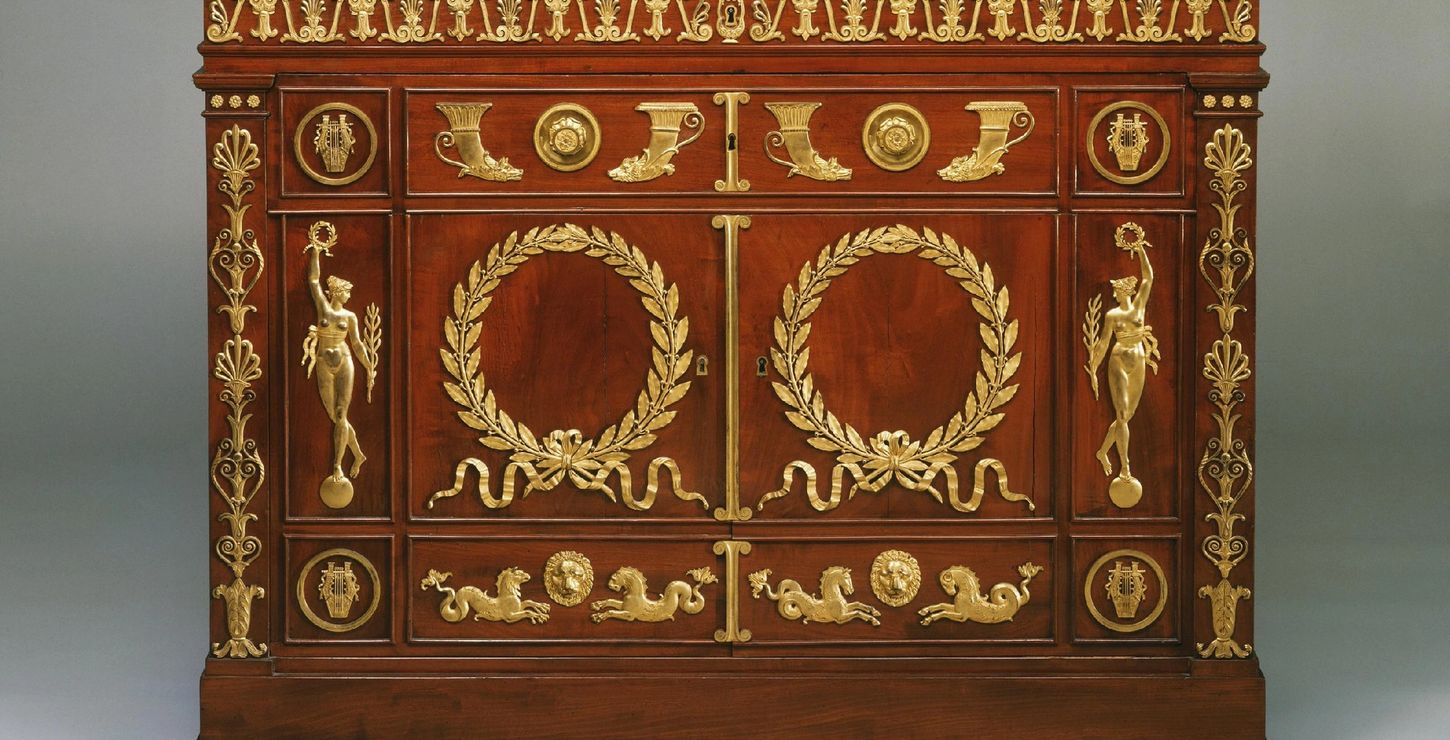Main Building
It is rare for a single gift to markedly transform a museum's collection. The receipt of the bequest of the Henry P. McIlhenny Collection, one of the finest private collections assembled in this country during this century, is such an event. Mr. McIlhenny served the Museum for 50 years, first as Curator of Decorative Arts and later as Chairman of the Board of Trustees. He applied his broad knowledge and discriminating eye to assembling an astonishing collection of 19th-century painting and drawing, which contains masterpieces by David, Constable, Ingres, Corot, Delacroix, Renoir, Pissarro, Degas, Cézanne, van Gogh, Seurat, Toulouse-Lautrec, Vuillard, Matisse, and Rouault, among others. These celebrated works are familiar to the museum-going public; Mr. McIlhenny was very generous in lending his paintings to this and other museums during his lifetime. Yet they represent only one aspect of the collection acquired by the Museum, which numbers approximately 450 objects. The range and quality of lesser-known objects in the McIlhenny Collection, and the discernment with which he chose objects by artists and makers who in many cases were out of fashion, will surprise and intrigue visitors to the exhibition. The full range of French art was an area of particular interest to Mr. McIlhenny. In the 1930s, he began to collect late neoclassical French furniture made under the reign of Charles X (1828-30), which was little appreciated at the time. He went on to acquire many examples of this elegant, understated style, and the groups of Charles X furniture displayed, made of elm and maple with fruitwood marquetry, represent the best collection of its kind in an American museum. He later added restrained examples of early Empire furniture, notably a mahogany secretary by Jacob, and a few choice pieces in the better-known 18th-century French styles of Louis XV and Louis XVI. Henry McIlhenny's interest in simply ornamented furniture, in which great attention is paid to the selection of the wood and the form itself, carried through to American craftsmen. He was a great enthusiast for two important but virtually undocumented Philadelphia furniture makers of the Federal period, Ephraim Haines and Henry Connelly, and in 1953 mounted the first major exhibition of their work. His interests as a museum professional were as broad as his activities as a collector, and he organized important exhibitions of Daumier, Degas, and Toulouse-Lautrec as well as of early Philadelphia silver and china. On purchasing a 19th-century castle in Ireland, Mr. McIlhenny was able to explore another aspect of his taste, Victorian art. He assembled a large group of paintings and drawings by Sir Edwin Landseer, the most comprehensive collection in American hands, and marble sculptures of mythological subjects by Benjamin Edward Spence and Richard James Wyatt, who rank among the most important Victorian sculptors. Other works purchased for this specific, intensely romantic, environment include Irish 18th-century rococo furniture and fine examples of the Irish silversmith's art. For the Philadelphia townhouse, he acquired several Indian and Anglo-Indian objects, including a striking ivory armchair, and English views of the empire, such as Sir Edward Lear's Mahabalipuram. Whether selecting a drawing to strengthen his collection of 19th-century French art, or a piece of Charles X furniture for use in his house, Mr. McIlhenny's sense of quality served him brilliantly throughout his life.
